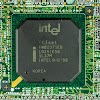Tables Data
A table is a set of data elements (values) that is
organized using a model of vertical columns (which are identified by their
name) and horizontal rows. A table has a defined number of columns, but
can have any number of rows. Each row is identified by the values appearing in
a particular column identified as a unique key index or the key field.
Data types
Data types are used to identify which type of data (value) we are going to store in the database. Fields themselves can be of different types depending on the data they contain. Data types in Open Office base is broadly classified into five categories listed below.
Numeric Types
Numeric data types are used for describing numeric values for the field used in the table of a database. Numeric data types in a database can be using for storing information such as mobile number, roll number, door number, year of school admission, true or false statements, statistical values, etc. The different types of numeric data types available are listed here.
Binary Types
Binary data types are used for storing data in binary formats. Binary data types in a database can be using for storing photos, music files, etc. In general, files of any format can be stored using the binary data type. The different types of binary data types available are listed here.
Data Time
Date time data types
are used for describing date and time values for the field used in the table of
a database. Date time data types in a database can be using for storing
information such as date of birth, date of admission, date of product sale,
etc. The different types of date time data types available are listed here.
Manipulating Data
Data Definition Language (DDL)
A data definition language or data description language (DDL) is a standard for commands that define the different structures in a database. DDL statements create, modify, and remove database objects such as tables, indexes, and users. Common DDL statements are CREATE, ALTER, and DROP.
Data Manipulation Language (DML)
A data manipulation
language (DML) is a language that enables users to access and manipulate data
in a database. The goal is to provide efficient human interaction with the
system. Data manipulation
involves:
• Retrieval of information from the database- SELECT statement
• Insertion of new information
into the database - INSERT statement
• Deletion of information in the
database - DELETE statement
• Modification of information in
the database - UPDATE statement
A query language is a part of DML
involving information retrieval only. The terms DML and query language are
often used synonymously.
A popular data manipulation language is Structured Query Language (SQL). This is used to retrieve and manipulate data in a relational database. Other forms of DML are those used by IMS/DLI, CODASYL databases, such as IDMS and others. Data manipulation language comprises the SQL data change statements, which modify stored data but not the schema or database objects.
There are two types of DML
• Procedural: The user specifies what data is needed and how to get it
• Non procedural: The user
only specifies what data is needed. This is easier for the user but may not
generate code as efficient as that produced by procedural languages.
Questions:
1. List the data types used in a DBMS /RDBMS?
2. State the relationship and
difference between a primary and foreign key?
3. List data types available in
Numeric Data type?
4. List data types available in
Alphanumeric Data type?
5. List data types available in
Numeric Data type?
6. List data types available in Data type?











0 Comments